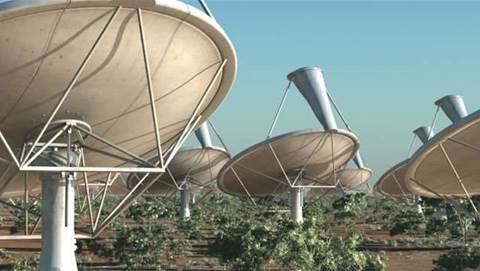
Researchers at the University of Rochester explained that they can slow the image down for storage, and subsequently retrieve the data intact.
The scientists said that, while the initial test image consists of only a few hundred pixels, the technique has the potential to store a "tremendous amount" of information.
The image of a 'UR' (for University of Rochester) was made using a single pulse of light and the experts believe they can fit as many as 100 of these pulses at once into a 4in cell.
Squeezing this much information into so small a space, and retrieving it intact, opens the door to what the researchers refer to as "optical buffering", or storing information as light.
"It sort of sounds impossible, but instead of storing just ones and zeros, we are storing an entire image," said John Howell, assistant professor of physics and leader of the team that created the device.
"It is analogous to the difference between snapping a picture with a single pixel and doing it with a camera. This is like a 6-megapixel camera."
Ryan Camacho, Howell's graduate student and lead author on the article, added: "You can have a tremendous amount of information in a pulse of light, but you can lose much of that information if you try to buffer it.
"We are showing that it is possible to pull out an enormous amount of information with an extremely high signal-to-noise ratio even with very low light levels."
The scientists said that optical buffering is a particularly hot field because engineers are trying to speed up computer processing and network speeds using light.
To produce the 'UR' image, Howell shone a beam of light through a stencil with the U and R etched out.
Anyone who has made shadow puppets knows how this works, but Howell turned down the light to such an extent that a single photon was all that passed through the stencil.
The scientist explained that quantum mechanics dictates some "strange things " at that scale, so that bit of light could be thought of as both a particle and a wave.
As a wave, it passed through all parts of the stencil at once, carrying the "shadow" of the UR with it.
The pulse of light then entered a 4in cell of cesium gas at a warm 100 degrees Celsius, where it was slowed and compressed, allowing many pulses to fit inside the small tube at the same time.
"Now I want to see if we can delay something almost permanently, even at the single photon level," said Howell. "If we can do that, we are looking at storing incredible amounts of information in just a few photons."

_(20).jpg&h=140&w=231&c=1&s=0)

_(22).jpg&h=140&w=231&c=1&s=0)
.png&h=140&w=231&c=1&s=0)



_(26).jpg&w=100&c=1&s=0)

 iTnews Executive Retreat - Security Leaders Edition
iTnews Executive Retreat - Security Leaders Edition











_(1).jpg&h=140&w=231&c=1&s=0)



